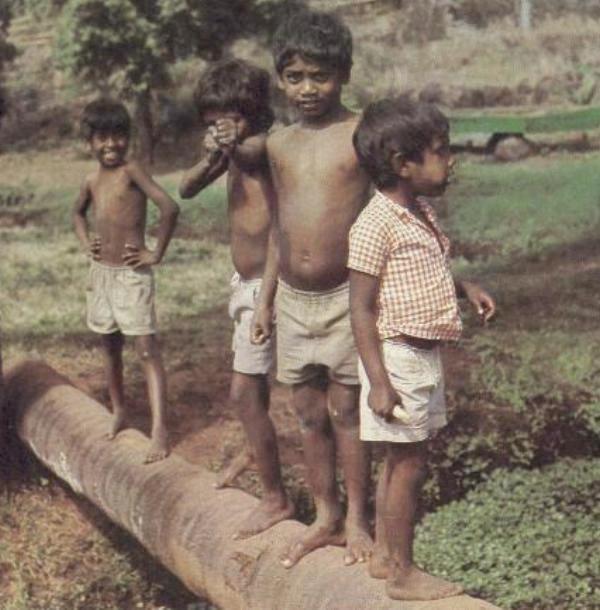
Réunion

Figure 1.--Rénion was uninhabited when discovered frirst by the Arabs and then the Europeans. It became a French and then British colony. The populatin as a resulgt is of mixed etnicity. This photograph was taken on Reunion Island, we think in the 1960s. The look ton be of Indian origins. Many Tamils came to Réunion as indentured wiorkers (mid-19th century).
|
|
Réunion is the largest island in the Indian Ocean Mascarene group, situated about 200 km southwest of Mauritius and 650 km east of Madagascar. Arab merchant seamen were the first to report Reunion. They called it Dina Morgabin ('Western Island'). The Portuguese were the first Europeans to visit the Island and found it still uninhabited (1513). They named it Santa Apollonia.
France seized the island and at first used it as a penal colony. Réunion became a post of the French East India Company as France became increasingly involved in trade with the East (1665). The French Indian Ocean islands became important (18th and 19th century). The French as part of their colonial effort in India set up colonies on the islands of Reunion and Mauritius (18th century). The settlers used slave labor. The primary crops were cloves, coffee, and sugar. These highly profitable plantations required imported labor. This was provided by slaves, mostly from Portuguese Mozambique and Zanzibar. Britain seized the Island during the Napoleonic Wars (1810-14), but allowed it to remain culturally French. Coffee could no longer could be produced competitively (after 1815). Planters turned to sugarcane as the main crop. With the end of slavery (1848), plantation owners bought Chinese, Malays, and Malabar Indians to the island as indentured workers. As a result, Réunion now has a complex ethnic mix. The opening of the Suez Canal (1869) did great damage to the island economy. Réunion lost its importance as a stopover on the East Indies trade route. Réunion during World War II joined the Free French (November 1942). France after the War changed the status of Réunion was changed from a colony to an overseas department. The population on Réunion sought increased political autonomy and higher wages (1880s-90s). We do not yet have a page on Réunion, but we do have a school page.
HBC

Navigate the Boys' Historical Clothing Web Site:
[Introduction]
[Activities]
[Biographies]
[Chronology]
[Cloth and textiles]
[Clothing styles]
[Countries]
[Topics]
[Bibliographies]
[Contributions]
[FAQs]
[Glossaries]
[Images]
[Links]
[Registration]
[Tools]
[Boys' Clothing Home]
Navigate the Boys' Historical Clothing national pages:
[Return to the Main African country page]
[Return to the Main African page]
[Angola]
[Cape Verde Islands]
[Democratic Republic of the Congo]
[Gabon]
[Lessotho]
[Madagascar]
[Maurutius
[Mali]
[Rawanda]
[
[South Africa]
[Seychelles]
[Uganda]
[Zaire/Congo]
[British Empire]
[Franch Empire]
Created: 11:21 PM 10/26/2013
Last updated: 11:21 PM 10/26/2013



